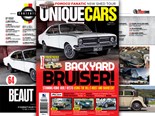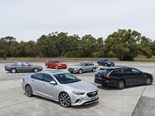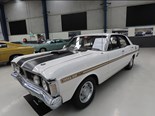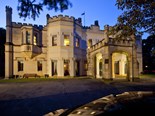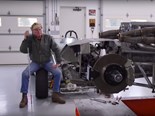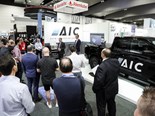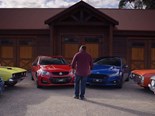Holden VN Commodore v Ford EA Falcon: Classic Review
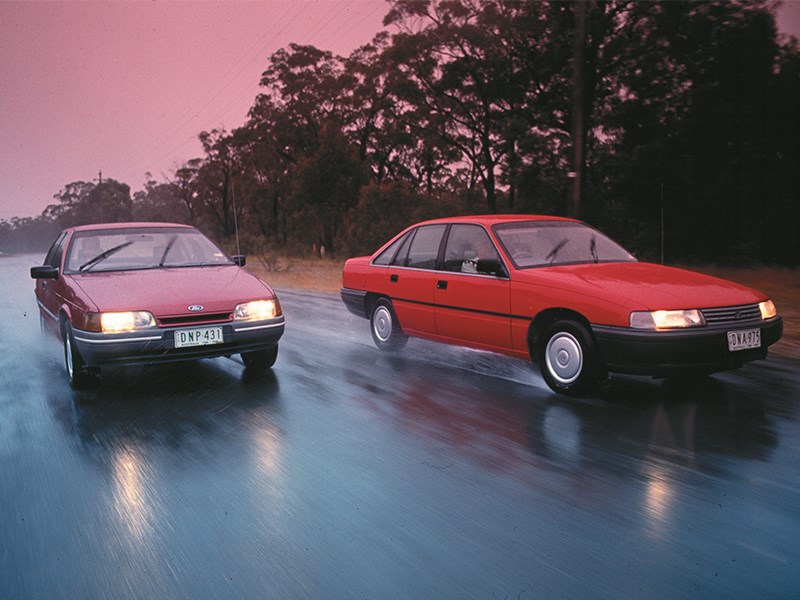


|
Wrighty remembers when Holden and Ford went head-to-head in ’88 and finds his glasses aren’t exactly rose-tinted.
I can’t be the only person who can hardly believe that the much-
celebrated Bicentennial is now a quarter of a century ago. In one of history’s interesting flukes, 1988 was also the year that Holden and Ford Australia each launched important new cars, cars that were meant to be futuristic, practical, quintessentially Australian and – to use a hackneyed phrase – ‘world class’. The promise was there but, sadly, the delivery wasn’t.
This article was first published in Unique Cars Magazine #351, June 2013.
Ford was first with its EA Falcon, introduced in March under the bland alliterative banner ‘Simply Stunning’. Elements of it were stunning; such as the entry-level 90kW 3.2-litre engine (quietly discontinued at the end of ’88), the poor panel fit (especially the heavy plastic bumpers) and the difficulties experienced with front-end alignment.

The EA had been ‘scooped’ by Wheels magazine some years before its debut. Just after the magazine appeared with the EA on the front cover I happened to be at Ford Australia with (the late) Brian Woodward having driven down from Sydney in a Fairlane which we were returning to base. PR boss Mike Jarvis laughed bravely when we asked him about the next Falcon and denied it point blank; we, of course, didn’t believe him.
READ NEXT: FAREWELL COMMODORE: 1978-2019
Jarvis and his colleagues were nervous about the fact that Borg-Warner would not have the new four-speed electronic automatic transmission in time for the EA’s debut in February, 1988. And so Ford’s international ambassador, Sir Jackie Stewart, was flown to Australia to address a group of journalists several months prior to launch.
Stewart spoke of the superb torque of the new 3.9-litre engine and how well it worked with the three-speed transmission. This was insurance: Get the facts out early and argue your case rather than have (lowly) journos take the wind out of your sails come launch time.
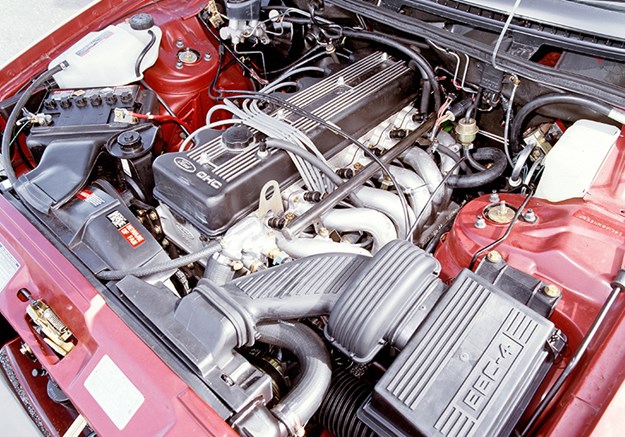
There was no doubting the EA’s physical beauty and I thought it among the best looking sedans in the world at the time. But the driving experience did not live up to this promise. I especially remember the muted praise of Peter McKay and Bob Jennings driving a yellow example.
The suspension was too soft, producing body roll and roll steer. But the Falcon S, with firmer suspension and wider Snoflake alloys, handled quite well. The 3.2-litre engine represented typical Ford entry-level thinking and no-one I know of in the media ever got to test one. And, yes, the three-speed automatic was – despite Sir Jackie’s bluster – far too old-fashioned. The problem was the final drive. The car ran out of rpm at about 170km/h in top where a five-speed manual with the optional multi-point engine could approach 200.
The EA came to market before all its problems had been fixed and the early months were disastrous. I bought a car off the press fleet once I was confident that the issues had been sorted. It was a Silver Slate 3.9 multi-point five-speed manual S. Driving it up from Melbourne to the Central Coas,t I was delighted to see economy of 10L/100km, a figure entirely beyond reach of the old XF with its coefficient of drag in the order of 0.50.
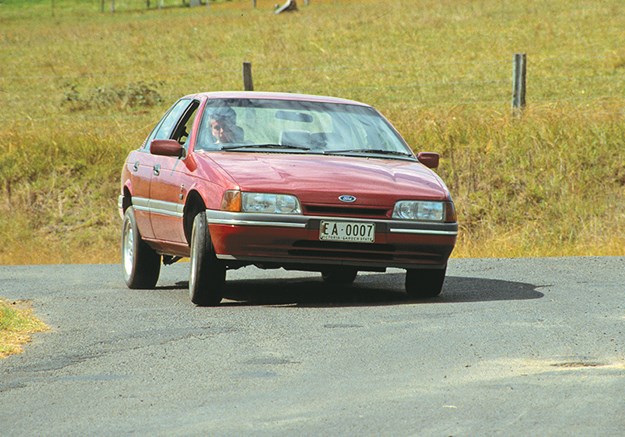
In the six-or-so months I owned the Falcon nothing went wrong with it. (But the next owner wasn’t so lucky!). A series of modifications including a lovely ox blood Nardi leather wheel, lowered suspension, sports exhaust and more turned it into a pretty nifty sports sedan.
By the time I’d upgraded the EA into the machine I wanted, the VN Commodore had been launched at Sanctuary Cove in August. There was a momentary risk that the occasion would be overshadowed by (the late) Mike Kable’s distress at the death of the Old Man. Who, we asked? Which old man? He meant Enzo Ferrari.
A clever advertising campaign under the heading of ‘The Big New Commodore’ (‘Like it? I love it!’) downplayed the VN Commodore’s lack of technical sophistication and emphasised its size, ruggedness and practicality. This approach showed up the clichéd inadequacy of J. Walter Thompson’s effort for the EA launch.
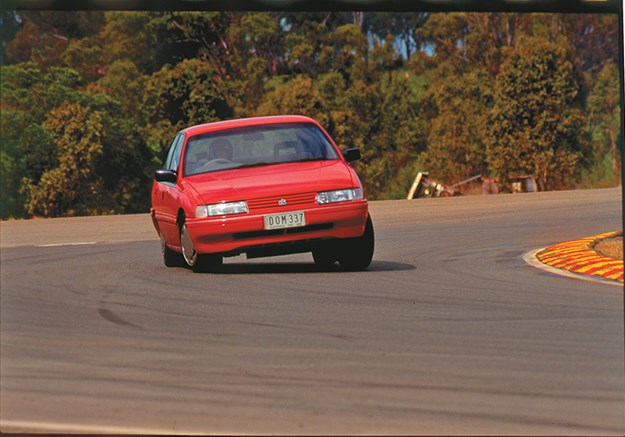
Of course it had a four-speed automatic; that arrived with the Nissan-engined VL two-and-a-half years earlier. This was sufficient on its own for most critics to rate the VN as better than the Falcon. In my view – then and now – the biggest issue facing the VN was the VL and its wonderful 3.0-litre Nissan six. A turbocharged option gave the car a top speed of 217km/h. A Calais Turbo with Howe leather trim was a great car in 1986. There was even a (three-speed auto) V8.
The XF Falcon was like the day before yesterday’s car compared with this sophisticate. But the punters forsook sophistication for size. Enter the VN, all size and precious little sophistication. It hit the spot. But it just wasn’t as good a car as its predecessor.
The VN used a primitive pushrod 3.8-litre V6 which delivered similar performance to the SOHC 3.9-litre MultiPoint straight six and the VN was quicker from zero to 100km/h, thanks to a jackrabbit start. That was largely because the Holden was some 120kg lighter. Comparing auto versions, the VN gave much better economy than its rival.
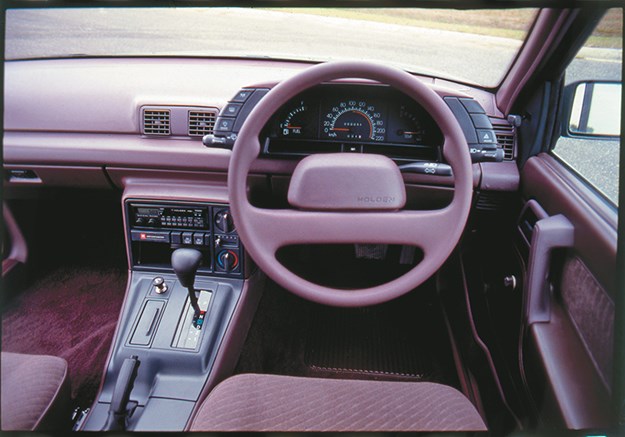
Mostly, the VN got a better run in the media than it deserved. Holden’s PR machine was so vastly more efficient than Ford Australia’s and journos were treated as equals rather than as inferiors to be wary of. As you sow, so shall you reap.
When the vaunted Wheels Car of the Year Award night rolled around, the glory went to the VN Commodore. Some judges, notably Sharyn McKay, hated the Commodore. Editor Phil Scott had to cast a deciding vote (Commodore or Civic). Twenty-four years later, Scott said, ‘With the benefit of hindsight, I made the wrong call.’
He wasn’t the only one. The VN collected plenty of awards. I can remember being bemused by the success of such an ordinary car. And, no, I didn’t think the EA should have won in its place. While I had turned my own car into something better, the build quality was poor. And perhaps the VN was worse. The EA Falcon was a better car at high speed, especially in S guise.

Consider these figures. The Falcon was 1857mm wide and had a front track of 1546mm. The rear track was 1533mm. By contrast, the VN was 1794mm wide and rode on tracks of 1451 (1453 Calais) and 1478 (1480 Calais). The EA had a much better wheelbase-to-length ratio (2794/4811 versus 2731/4850).
It also had a better located live rear axle, thanks to the six-link Watts configuration versus the VN’s more rudimentary five-link setup. There is even evidence that Ford Australia’s engineers gave more thought to the inevitable compromise between a low coefficient of drag and straightline stability. The Commodore was much more affected by crosswinds.
Safety was not the dominant concern then that it is now and the Commodore’s lighter weight was seen as a triumph of fuel efficiency.
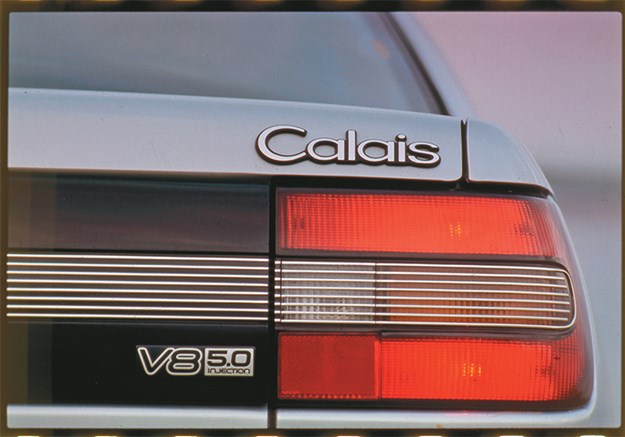
All this, as Phil Scott might say, is hindsight but, hang on, I remember how much better the EA S with the 3.9 multi-point drove than any VN. I think it is certainly the case that a Commodore Executive was better than its 3.2 Falcon GL equivalent and even perhaps the 3.9 throttle body. And you’d have a VN Calais with the optional leather over a Fairmont Ghia. But the five-speed Falcon S with the 3.9 multi-point was the pick until the VN SS arrived in March 1989.
The EA also had an edge when it came to the interiors. The VN driver faced gauche kiddy-car instruments in a sea of cheap grey plastic. Chunky, clumsy switchgear. The message was Big (and Stupid). The EA’s dials were for grownups but the cloth trim was just awful – though no worse than the Holden’s. Both felt like what they were – fleet cars unless you bought a Calais or Fairmont Ghia, and even then…
The big picture hove into view around the turn of the century as both once proud models descended to old banger status. Paint fell off, trim deteriorated (especially in the Commodore), mechanics laughed. You don’t see many immaculate EAs or VNs at car shows.
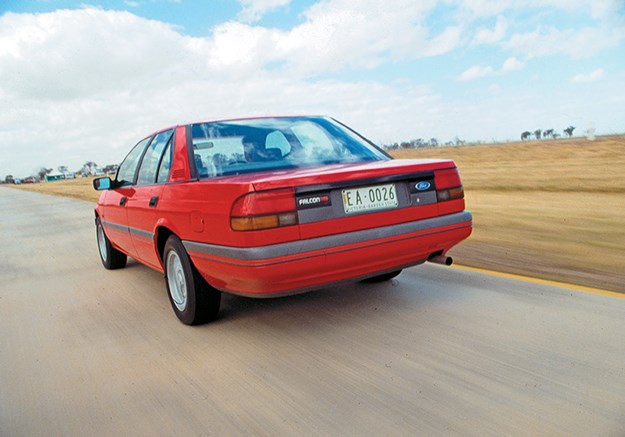
These cars had been intended by their makers to drive the Australian automotive industry towards the new century. Instead, their graceless ageing implied the parlous state of that industry in the mid to late 1980s. (It wasn’t until the arrival of the BA Falcon (2002) and VE Commodore (2006) that build quality was comparable with Japanese and European models.
Nevertheless, it’s important to acknowledge the huge step that the EA was over the XF. For Holden, the breakthrough car in terms of overall competence was probably the VL, which gave the Commodore its first impressively advanced six-cylinder engine as well as an excellent four-speed automatic transmission. The VN simply provided the interior space to rival the Falcon for the first time.
Both 1988 models brought the aerodynamic theme – so influentially expressed by the Audi 100 at the 1982 Paris Salon – to Australia and, in this sense at least, they were world class. The ideas were good but the execution in both cases was lamentable.
Fifty-three years of rivalry
LOOKING BACK, the most significant thing about the EA and VN was that both cars had a far lower coefficient of drag than any predecessor.
There is no question that the EA was a huge improvement over its boxy and crude XF predecessor. But that XF easily outsold its VL Commodore rival. The concept of the EA was to combine the interior space of the XF with a newfound sophistication and elegance.
The previous occasion when both Holden and Ford Australia had launched critical new models within a six-month time frame was 1978-79 when the VB Commodore and XD Falcon made their debuts. There was no denying the newness of the Commodore (despite carryover drivetrains) but the elegant styling of the Falcon disguised a model not all that different in its essentials than the old XC.
Since the XK Falcon came to Australia to challenge the local champ, the biggest steps forward for Holden and Ford respectively have been the EH, HQ and Commodore in the red corner and the XR, XA and EA in the blue corner.
Classic Australian Family Car Value Guide home page
Muscle Car Value Guide home page
Japanese Classic Car Value Guide home page
Unique Cars magazine Value Guides
Sell your car for free right here
Get your monthly fix of news, reviews and stories on the greatest cars and minds in the automotive world.
Subscribe

.jpg)







